Energy in Latin America and the Caribbean, Four Years on a Downslide
Erasmo Calzadilla
HAVANA TIMES – Around this time of year, a group of collaborators [1] make the most of British Petroleum’s annual report [2] to try and understand and present the energy dilemma our region is experiencing, so that it is more accessible to the general population. Things are looking really bad, as we will try and show you.
Let’s begin by taking a look at Latin America and the Caribbean’s huge and dangerous dependence on fossil fuels (which is similar in the rest of the world).
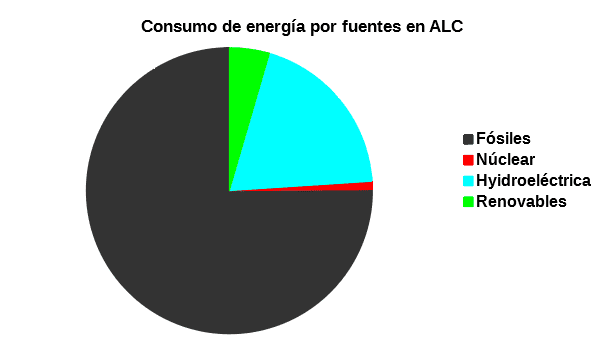
Over 75% of our energy consumption comes from fuel oil, natural gas and coal. While renewable energies (solar and wind) enjoy a lot of media attention, they only generate a ridiculous 5%.
However, these organic compounds that we depend so heavily upon, have been exploited for over a century as if there were no tomorrow, and in 2019, their days of glory are well behind them. Contrary to what many people might think, the crisis won’t begin when we burn the last drop; no, the simple decline down the right side of Hubbert curve (when approximately half of the initial volume has been extracted) is enough to bring about a recession or the collapse of an economy that is structured like a Ponzi scheme, where it only remains stable if it is always growing at an exponential rate. Just like a human being develops or puts on weight eating food and loses weight or dies without it, this is the way the global economy works with energy.
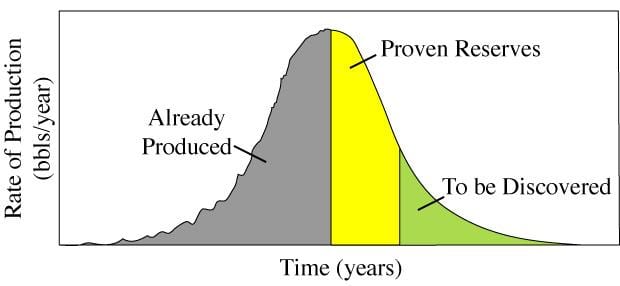
The above graph shows you the ideal Hubbert curve. How much have we envisioned this in Latin America and the Caribbean? Well, today, we are celebrating our fourth year of exceeding a maximum in energy production and lapsing into a prolonged and dizzying decline like we have never seen before in the history of our continent. We are living a unique historical moment, and we don’t even realize it.
Will this be the final peak? It’s hard to say because there are many signs indicating that this is the case. Last year, energy production rates in general and oil production leveled out with consumption for the first time. At this rate, there will be less and less to export, and, of course, to consume and grow.
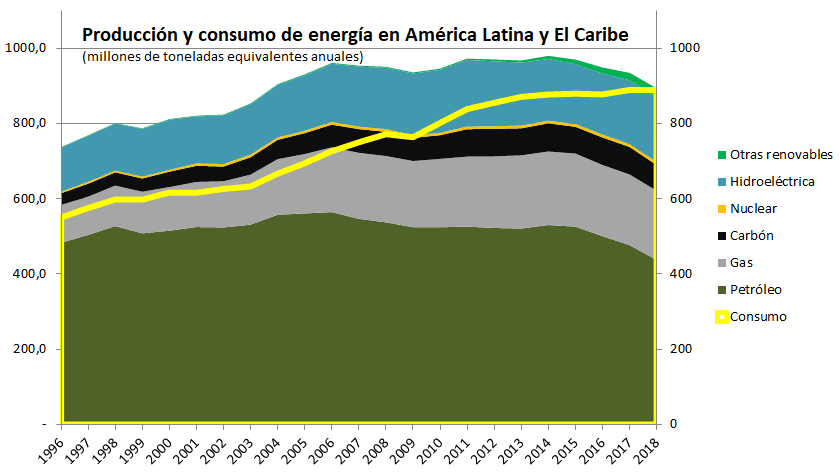

The inevitable end of the world as we know it today is hard to come to terms with; many people irrationally hold onto the innovations that are taking place in the renewable energy sector.
However, a simple analysis of the speed at which the substitution is taking place proves that the gap can never be filled. Not now, not in the mid-term, and possibly never.
These are promising technologies, but they need to drink a lot from a breast that is drying up more and more every day (of fossil fuels in decline) in order to reach maturity.
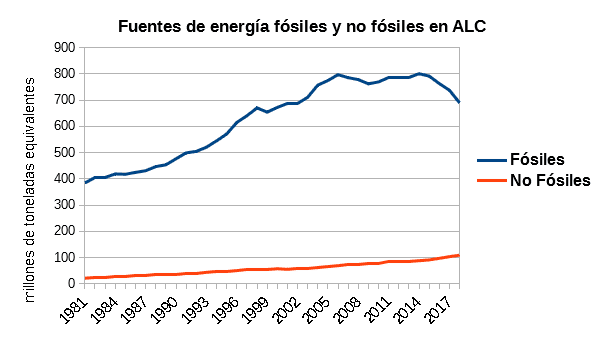
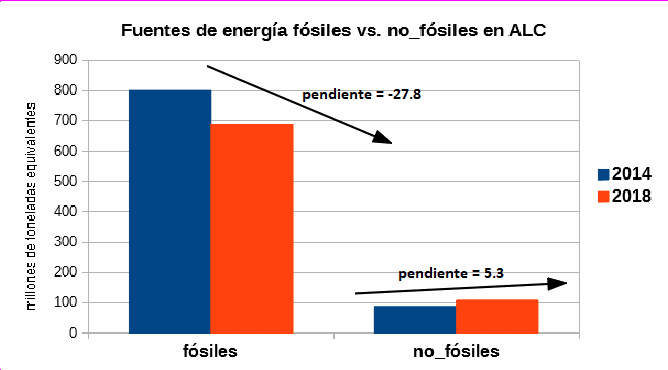
To top all of this off, renewable energy growth has been concentrated in countries that can give themselves this luxury, so to speak: Brazil, Mexico and Chile are responsible for over 80% of their electricity generation. Supposing this replacement miracle does happen, abysmal inequality would be an obstacle to progress and a destabilizing factor.

You can’t mention the energy debacle in Latin America without bringing up Venezuela, the first one to fall. Battling factions, the press, analysts and nearly anyone who has an opinion on the subject, presume that PDVSA’s (the Venezuelan state oil company) ruin is the result of the political situation. However, oil production in the South American country was already waning steadily before Hugo Chavez stepped foot in Miraflores. Let’s compare this to the situation in Mexico, which was ruled by the center-right up until yesterday.
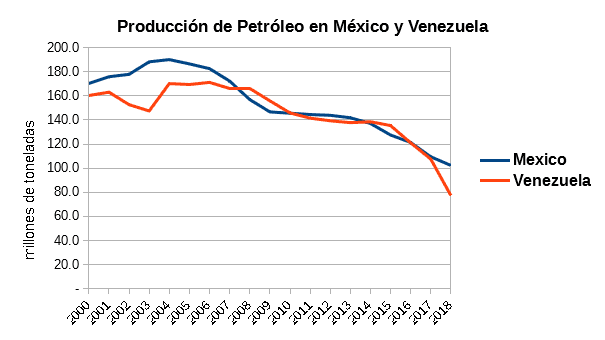
As you would think, the depletion of non-renewable energy sources is a transversal phenomenon that is affecting every extractionist system, no matter what party is sitting in the presidential seat.
An important thing to bear in mind: in 2018, PDVSA came crashing down while PEMEX seems to have kept afloat. In order to understand why this has happened, it’s important to know that the Venezuelan economy is a lot more dependent on fossil fuels (over 90% vs. less than 20% in the more diversified economy of Mexico) and is therefore less resilient.
Conclusion and Predictions
For some years now, we have been warning people about a situation and its severity has exceeded our forecasts. There is no way to sugarcoat it, in Latin America and the rest of the world, we are headed for a drastic contraction of the economy and the subsequent decay of the world as we know it today. The crisis is already here, it will be publicly announced during the next decade, and it will be a miracle if it doesn’t lead to a crash. Swift and coherent action by countries, regions, families or other human congregations could reduce the devastating impact it will have. It would be great if social scientists, newscasters and even influencers helped the rest of the population understand what is happening, because we can’t expect much from our politicians anymore.
——
- Anibal Hernandez, Demian Morassi and Erasmo Calzadilla
- Statistical Review https://www.bp.com/content/dam/bp/business-sites/en/global/corporate/pdfs/energy-economics/statistical-review/bp-stats-review-2018-full-report.pdf
- I talk about oil because it is the most symbolic, but this decline is also present in the production of the other fossil fuels: coal and natural gas.





